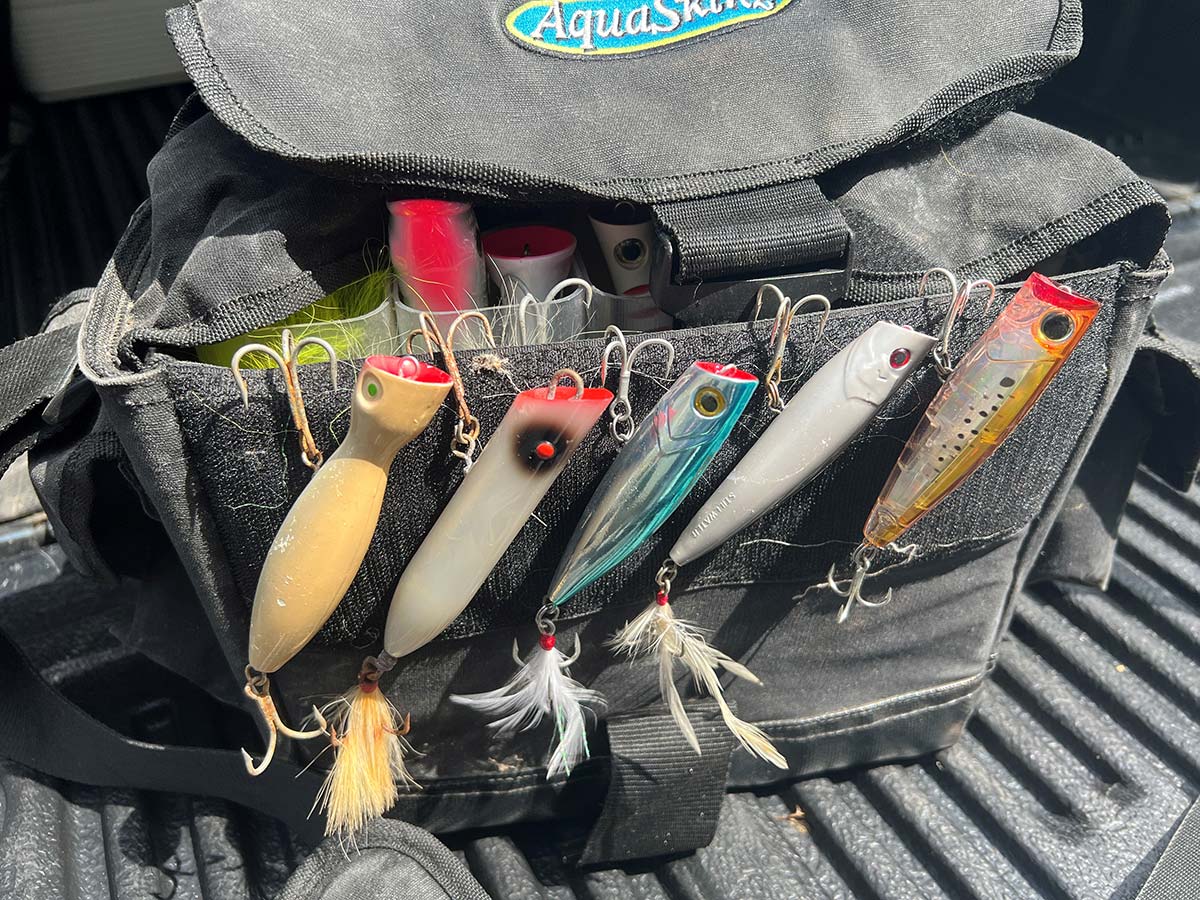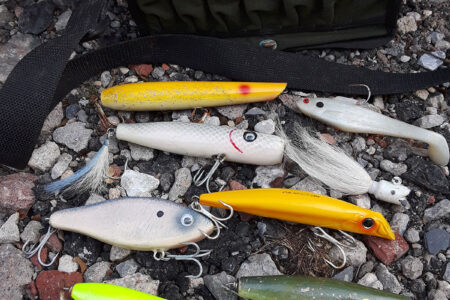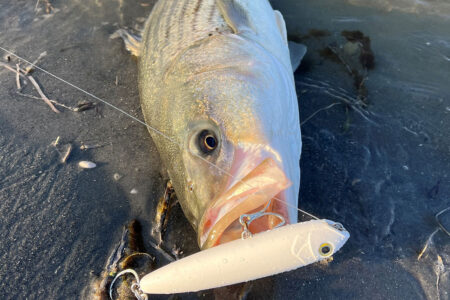
A spring tune-up on everyone’s first favorite striper plug.
My inauguration into the world of popping plugs came by way of the Arbogast Hula Popper back when I was like 8 years old. I had a VHS tape of Larry Nixon showing tactics for largemouth bass and the thing I took away from his demonstration of using the Rebel Pop-R can be summed up with the following quote. (Add heavy southern drawl for full authenticity). “Cast that Pop-R out there and let it set until the rings disappear, then pop it a few times and let it set again. If there’s a big ol’ bass down there looking at it, the longer it sets there the madder it makes him.”
I used that technique with the Hula Popper many times and I even have one of those core memories that lives on the encrypted partition of the hard drive in my head of a 3-pound class largie crushing my stationary popper and clearing the water with the strike, like a great white taking down a seal. It was awesome!
When I moved to coast at age 22, a friend showed me how effective poppers were on striped bass and for several seasons I was enamored with them. Here’s a quick rundown on the three popper styles that I believe to be integral to any surf bag, especially in the spring and fall.
Sink & Swim
When I made the transition to surfcasting, the hardest thing for me to get used to was that most of the poppers the guys around me were using, sunk! That just seemed so backwards to me after learning to float them for largemouth. But I soon gained an understanding that these poppers were meant to mimic a fleeing baitfish, not a badly wounded sunfish or frog, so a rhythm needed to be established between popping the rod and cranking the reel. In the time since I have come to understand that the best sinkers, like the ‘black eye’ poppers made by Super Strike are made so that they swim on a steady retrieve and the method that worked best for me was to swim the plug for several feet in between pops. I have also found that it’s of paramount importance to only pop the rod hard enough to make it splash, don’t rip it, causing it to lurch forward a foot or more. I also found that there is a perfect setup for rigging the sinking Super Strike; this is for the 2-3/8-ounce version—a cut 3/0 VMC treble on the front and a five hackle flag on the tail; this produces the best swim, easiest pops and the most hookups as well.
Slow Sink
When the fish are finicky or other cues tell you that there is a need for finesse, a subtle pop and slower sink-rate will often put the fish back into kill mode. My favorite plug for this situation in the Creek Chub ‘Striper Strike’ which is basically a plastic version of the old-school ‘broomstick-style’ popper. These plugs are buoyant enough to be paused for short spells on a tight line, and their pop is a subtle ‘kiss’ on the surface. These will swim on a steady retrieve as well, but the swimming action is too out-of-control for my liking. I typically use the olive/white and pearl white colors only. I rig these with a 2/0 VMC treble up front and a slightly bulky bucktail flag on the tail.
Floaters
This would be category that I use the least. If I’m throwing a floating popper it’s usually early spring and in calm, relatively skinny, water. There are exceptions for sure, one of them being times when the other types of poppers are getting looks but no commitment; sometimes a dead float with widely-spaced pops is what it takes to draw a committed strike. The floaters I use also tend to be on the smaller side; 3 to 4 inches. My favorites are the 1-ounce ‘green eye’ super strike, the Yo-Zuri 3D Inshore Popper and the smaller Smack-It. Another promising floater, the iPop, is being introduced by Tsunami this year which features a wider profile and proportionately larger pop. With these poppers, and especially the smaller ones, it’s important to remember to make the plug pop in a way that’s appropriate for its size, these plugs are small so their movements should also be small. For these I’m likely to switch out the forward trebles for something small and extra sharp like a Salt-X hook or an Owner ST-66 and a little ‘pinch-sized’ flag on the tail.
Poppers don’t get the credit they deserve, they cast like missiles, they come in styles that offer versatility and they draw explosive and exciting hits. And despite what the peanut gallery might say about them, they do catch some big fish, my personal largest was a 38-pounder on a 2-3/8-ounce Super Strike, but I have seen several fish well over 40 landed on them. With spring now upon us, don’t neglect the popper, it was you first favorite plug for a reason!




